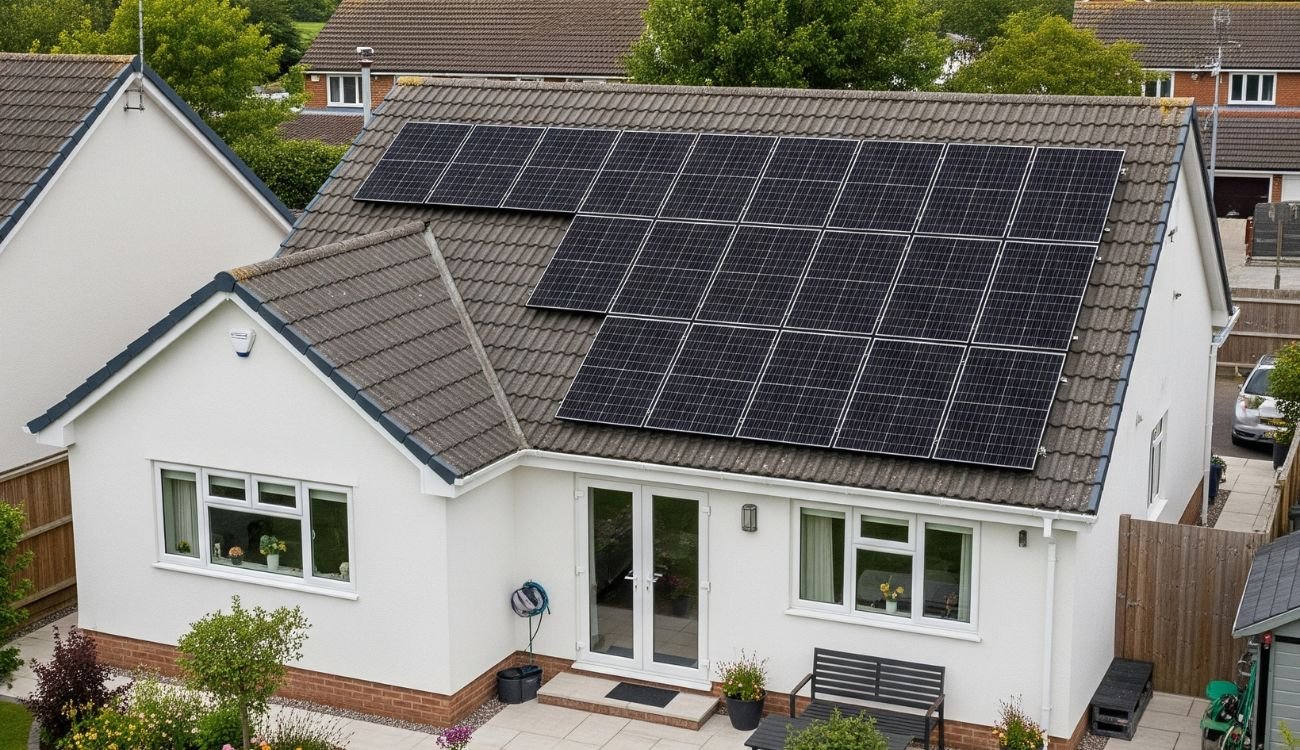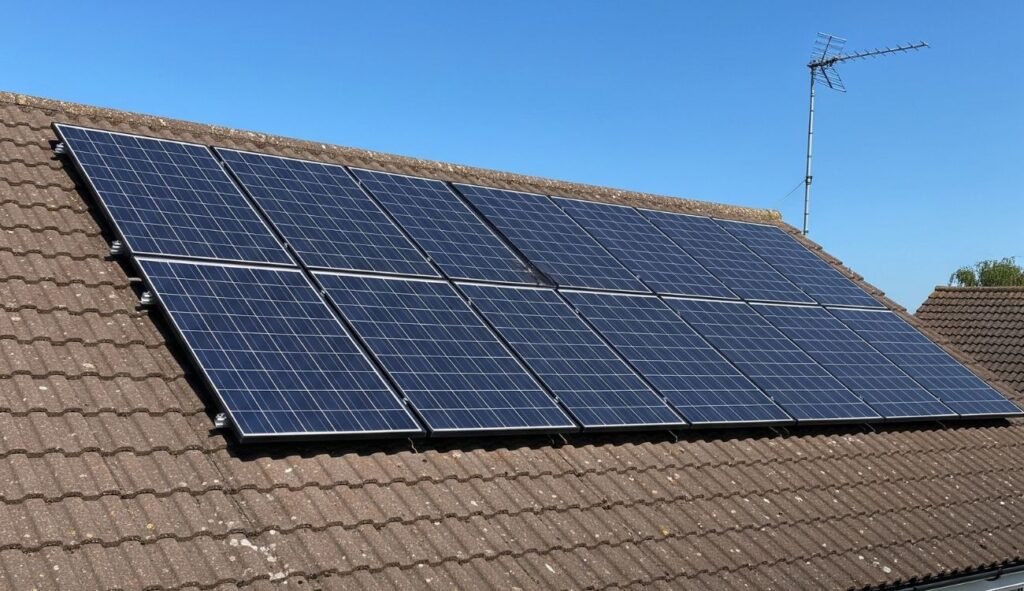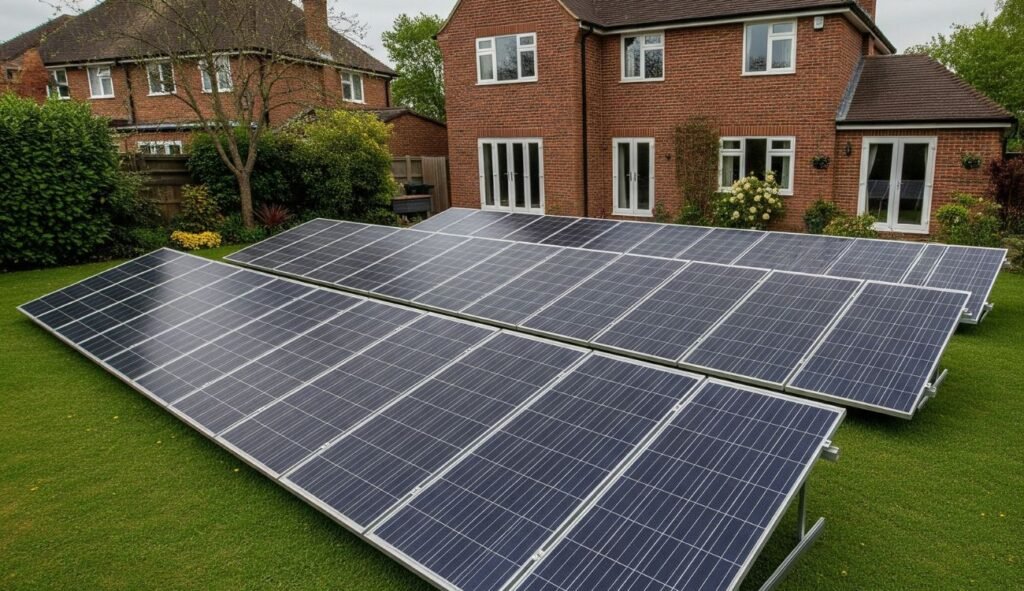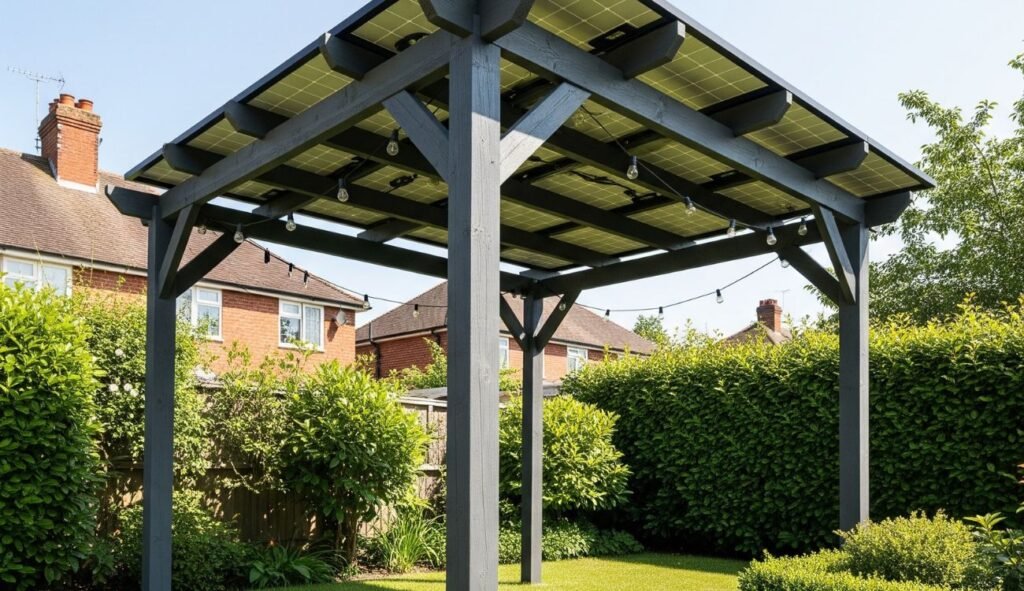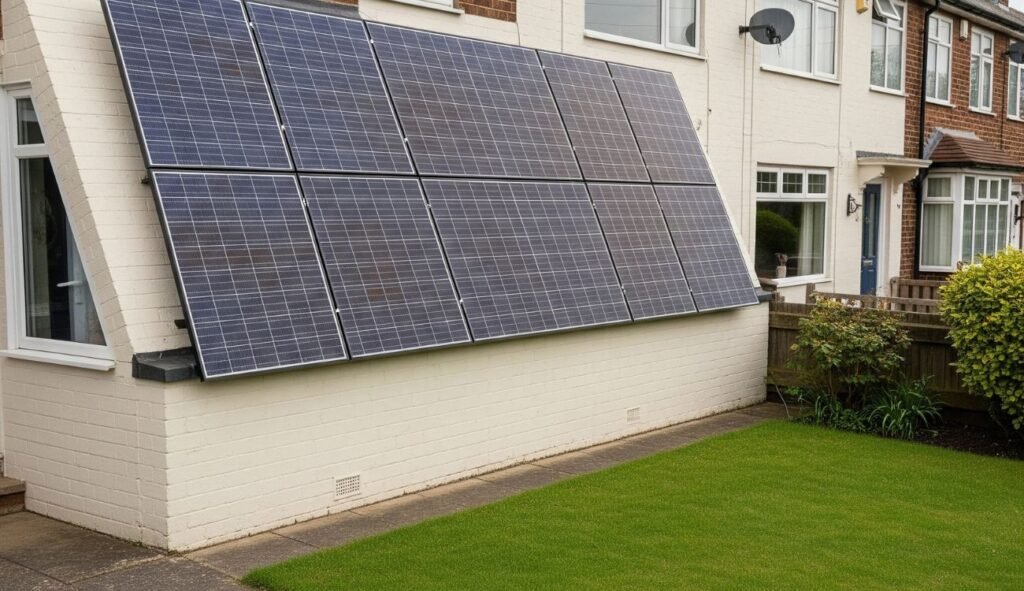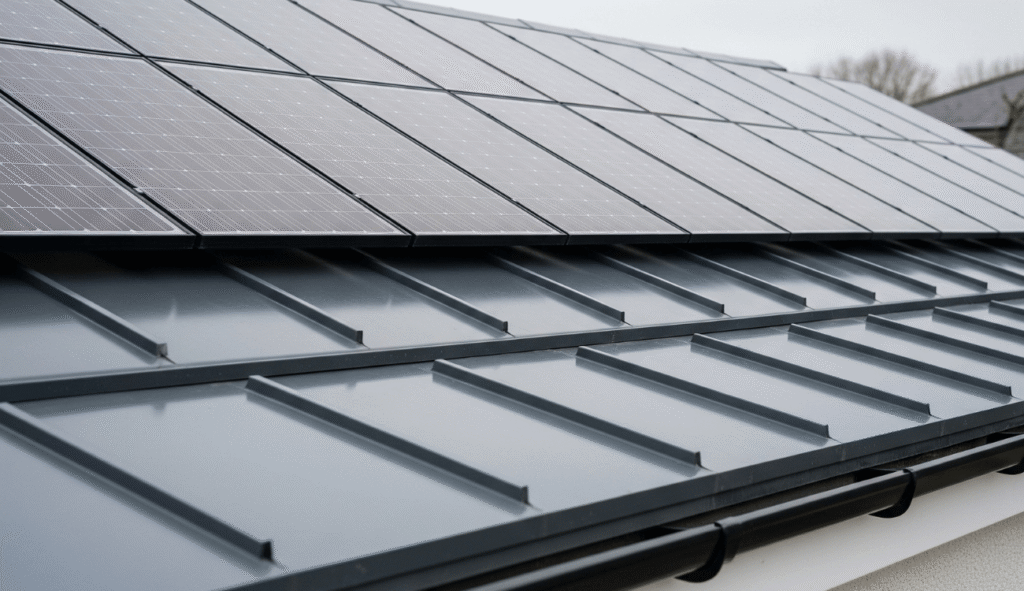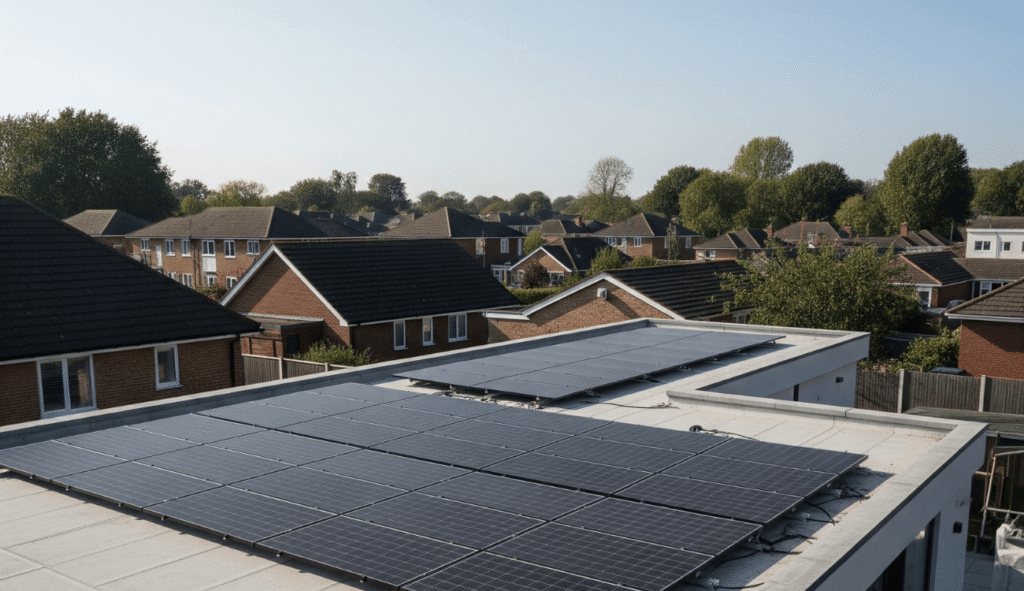Installing solar panels is one of the most impactful ways UK homeowners, landlords, and commercial property owners can reduce energy bills and lower their carbon footprint.
But one of the most common questions before starting a solar project is: how long does it take to install solar panels?
Whether you’re a homeowner in Newcastle, a landlord in Sunderland, or managing a commercial property in Middlesbrough, understanding the timeline involved in solar panel installation helps you plan effectively and ensures you make an informed investment decision.
How Long Does a Solar Panel Installation Take in the UK?
The actual installation of residential solar panels typically takes 1 to 3 days, depending on your property’s complexity, size, and roof type. However, the full process, from initial consultation to grid connection can take anywhere from 2 to 6 weeks in total.
Let’s break it down:
| Stage | Timeframe |
|---|---|
| Initial quote and site survey | 1–3 days |
| System design & approval | 2–5 days |
| DNO notification/approval | 1–3 weeks (varies by area) |
| Installation (panels + inverter) | 1–3 days |
| Grid connection & sign-off | 1–7 days post-installation |
Insight: According to Ofgem, the UK saw a 36% increase in domestic solar installations between 2022 and 2023).
Looking to install solar panels in the North East of England? Future Heat provides fast, reliable solar installations across Tyne and Wear, Newcastle, Durham, Sunderland, Middlesbrough, and beyond. Request your solar panel quote today.
What Factors Affect How Long It Takes to Install Solar Panels?
Several variables influence installation timelines:
1. Property Type and Roof Condition
- Detached homes with pitched roofs usually offer the fastest installation timeline.
- Roof repairs or strengthening (if required) will add extra days. Not all roofs are equally compatible. If you’re unsure, assessing your roofs suitability for solar panels should be your first step.
- Flat or concrete roofs may require additional mounting systems, extending the timeframe.
Flat roofs often require ballasted or tilted mounting frames, which can add to both cost and time. For more detail on these challenges, our guide to installing solar panels on a flat roof covers everything from mounting options to weatherproofing concerns.
Concrete roofs, while sturdy, may also require bespoke mounting solutions, especially when dealing with weight distribution and waterproofing layers. You can learn more about these specific considerations in our article on solar panel installation on concrete roofs, which outlines the best practices and potential obstacles.
Installing solar panels on a conservatory roof presents a different kind of challenge altogether. It often involves structural assessments, lightweight mounting solutions, and extra care during the install, all of which can influence project duration.
For properties where roof mounting isn’t feasible or ideal, wall mounted solar panels offer a flexible alternative. These can sometimes be quicker to install depending on the building’s structure but may require additional planning for optimal sunlight exposure.
Tip: If you’re looking for a functional yet aesthetic way to generate solar energy especially in garden or patio areas, a solar panel pergola can be an excellent solution. Installation is typically faster than a complex roof retrofit, but timing will still depend on foundation work and structural support.
2. System Size and Complexity
- A typical 4kW domestic system is usually completed within a day.
- Battery storage or EV charger integration can add an extra day or two.
- Larger solar setups, such as those for commercial properties or homes with ample outdoor space, may use ground mounted solar panels instead of roof installations. While these can allow for easier maintenance and scalability, the installation timeline can be longer due to groundwork and permissions.
Tip: If you’re investing in a commercial system, it’s still useful to understand the long-term benefits, our breakdown on why commercial solar panels are worth it in the UK dives into return on investment, energy savings, and payback timelines for larger properties.
3. Planning Permission Requirements
- Most domestic systems in England fall under permitted development rights.
- However, listed buildings, conservation areas, or installations exceeding specific thresholds may require planning approval, adding up to 8 weeks.
4. DNO (Distribution Network Operator) Approval
Before your system is connected to the grid, it must be approved by your local DNO. In the North East, this will usually be Northern Powergrid. Some systems (usually above 3.68kW) require G99 approval, which can take up to 3 weeks.
5. Scaffolding Requirements
If your installer needs to erect scaffolding, this can add 1–2 days to the total project time. This is common for two-storey or awkwardly positioned properties.
6. Grid Connection Notifications
- Systems under 3.68kW per phase can be notified post-installation (G98 form).
- Larger systems require pre-approval (G99 application), which may take 15+ working days.
How Do UK Government Grants Affect the Installation Timeline?
If you’re applying for a solar panel grant, this can affect the project schedule.
Available UK Solar Grants (as of 2025):
- ECO4 Scheme – for low-income households to receive funded energy improvements, including solar panels.
- Smart Export Guarantee (SEG) – while not a grant, this allows solar owners to earn from surplus electricity exported to the grid.
- Home Upgrade Grant (HUG) – for homes not connected to gas, especially in rural England.
Impact on Timelines:
- Funding approval and eligibility checks may take 2–6 weeks.
Can Solar Panels Be Installed in Winter or During Bad Weather?
Yes, solar panels can be installed in winter and all year-round. However, severe weather such as heavy rain, frost, or high winds may cause delays.
- Installers often monitor forecasts to schedule suitable days.
- Rain may delay roof work, while strong winds may impact lifting equipment and scaffolding.
The average number of workable installation days per month in the North East:
- May to September: 20+ good days/month
- October to April: 12–18 days/month depending on weather
Knowing when is the best time to install solar panels can influence both install speed and ROI.
Insight: If you’re concerned about whether solar panels work effectively in winter, the good news is they do, though some reduction in output is normal during the darker months.
How Soon Will Solar Panels Start Generating Electricity After Installation?
Immediately after commissioning, your panels begin generating electricity. However, you must:
- Receive MCS certification (usually issued within 24–48 hours)
- Register for SEG payments (this may take a few weeks)
Are There Specific Regulations for North East England That Impact Solar Installation Times?
No special regulations are exclusive to the North East. However, local council planning policies may affect installations on:
- Conservation properties in Newcastle
- Coastal homes in Northumberland
- Listed or historic buildings in Durham
We recommend checking your local council’s planning portal.
Future Heat stays updated on all local planning considerations to avoid unnecessary delays.
What’s the Best Way to Speed Up My Solar Panel Installation?
- Choose a reputable installer like Future Heat with local experience. Knowing how to choose a solar panel installer can help you avoid costly delays and ensure proper certification.
- Provide quick access to property information (roof type, electricity bills, etc.)
- Apply for any grants early, or let your installer assist.
- Respond promptly to DNO approval or SEG registration requests.
Tip: For those considering a DIY route, installing solar panels yourself may seem tempting, but it’s rarely the best option due to safety, legal, and efficiency concerns.
Frequently Asked Questions (FAQs)
Yes, it’s advisable for at least one adult to be present, particularly on the first day to grant access and answer any installer questions.
In some tight urban spaces or conservation zones, alternatives like cherry pickers or roof ladders may be considered. Future Heat can assess feasibility during the site visit.
Most residential installs cause minimal disruption. Scaffolding setup can be noisy, but interior disruption is limited. No major electrical outages occur beyond brief shutdowns.
Only if the roof is damaged during installation, which is rare with professional installers. Future Heat works with care and checks roof integrity before proceeding.
Installers can’t legally connect your system without DNO clearance for larger systems. If there’s a delay, your installer may temporarily commission the system off-grid for testing.
Our Verdict
Solar panel installation times vary depending on your property, system complexity, and any planning or DNO requirements, but in most cases, domestic systems can be fully installed and operational within 2 to 4 weeks from the initial consultation.
UK homeowners, landlords, and commercial property owners in the North East can benefit from government incentives and local solar experts like Future Heat to streamline the process.
In most cases, the time to complete the install is just one factor, how long it takes for solar panels to pay for themselves is often the next big question.
Whether you live in Newcastle, Sunderland, or Darlington, Future Heat delivers high-quality solar solutions backed by MCS accreditation and local knowledge.
Myles Robinson is a seasoned expert in the boiler and home improvement industry, with over a decade of experience. He is deeply committed to environmental sustainability, actively promoting energy-efficient heating solutions to help households reduce their carbon footprint. By combining industry expertise with a dedication to environmental responsibility, Myles continues to lead efforts in transforming home heating practices towards a more sustainable future.

